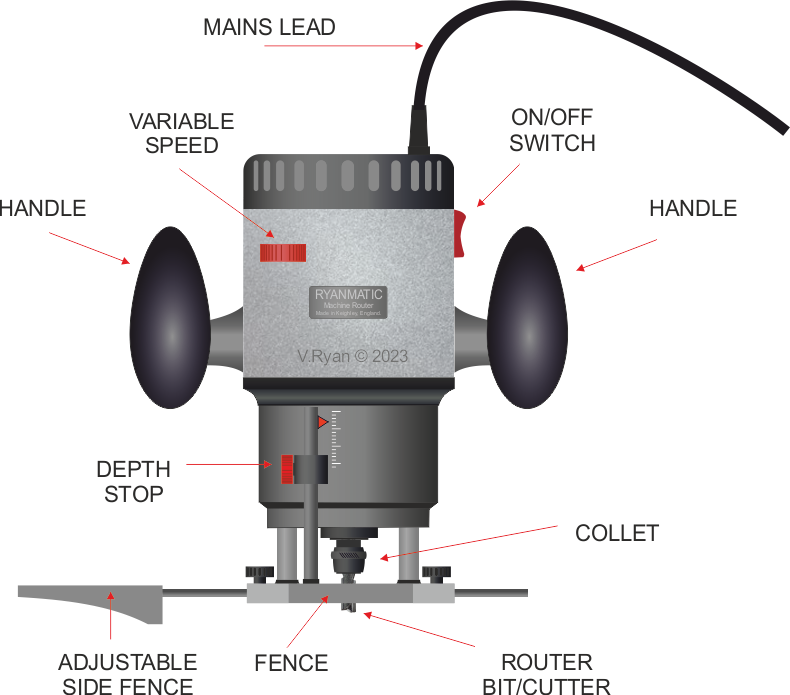| |
| CLICK HERE FOR INDEX PAGE |
| |
| MACHINE ROUTERS |
| V. Ryan © 2006 - 2023 |
| |
| PDF FILE - CLICK HERE FOR PRINTABLE WORKSHEET |
| |
| CLICK HERE FOR POWERPOINT VERSION OF WORKSHEET |
| |
| Machine routers are extremely versatile machines.
They are generally used to cut grooves in natural wood and manmade
boards. They have a cutter that rotates at high speed - as the operator
pushes the router forwards the cutter removes the wood in its path. They
can be very dangerous if not used with care and attention to safety
rules. |
| |
 |
| |
|
|
| |
1. The mains
electric cord is carried over the shoulder of the operator so that it
does not get in the way of the router as it is pushed forward.
2. It is good practice to use a
circuit breaker. This will cut power if any electrical fault in the
router is detected.
3. Always wear safety goggles to
protect the eyes. Never operate equipment like this without eye
protection. Wear a face mask to prevent breathing in the dust that is
created.
4. Hold both handles when using the
router. It is possible to switch the router on/off with the thumb of the
left hand (see example above).
5. Push the router forward slowly.
Look carefully at the diagram shown above - this shows the direction to
move router. If this is done incorrectly, the wood will be pulled into
the cutter rapidly. This can be very dangerous and it will also damage
the wood being worked on.
6. Always seek instruction /
training from an appropriately qualified instructor before using any
tools, especially power tools. |
| |
| The diagram below shows a typical machine router. A
wide range of cutters are available and they are fitted in the collet,
using a couple of small spanners. |
| |
 |
| |
|
|
| |
Diagram A and B show the same typical
plain router bit. The router bit has two hardened steel cutters,
ground to an angle of approximately 30 degrees. As they rotate
they remove the waste wood.
Sometimes a bearing will be fitted to the router bit (DIA. B). This is normally done when
the outside edge of a piece of wood is to be rebated or a mould
applied to the edge. |
| |
  |
| |
| CLICK HERE FOR POWER TOOLS INDEX PAGE |
| |



